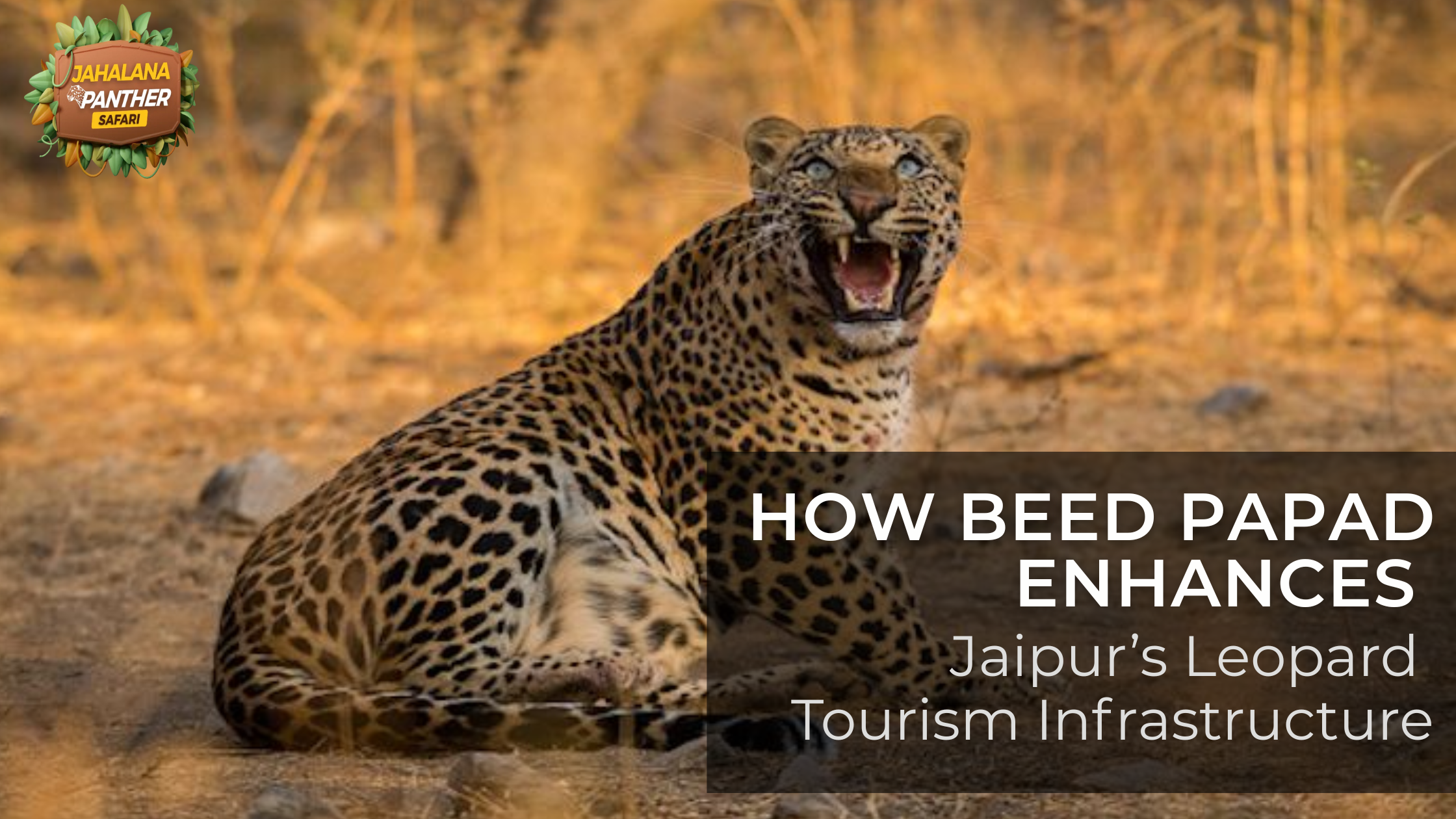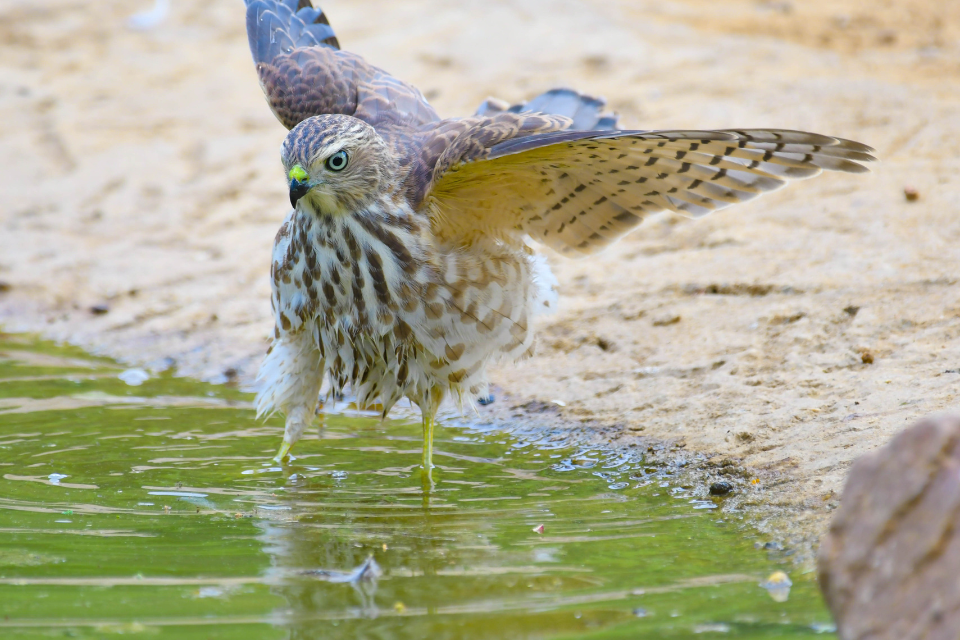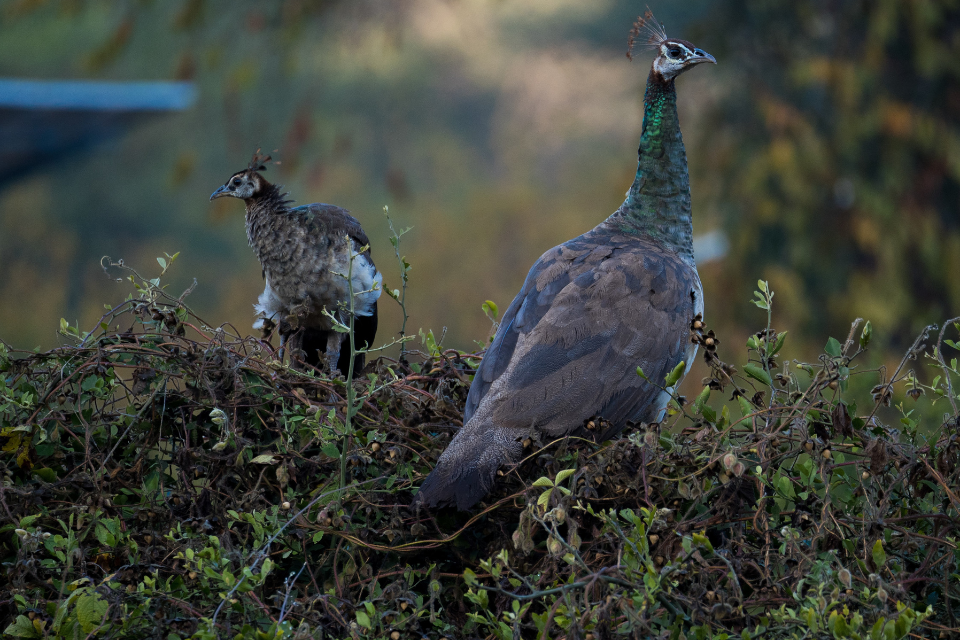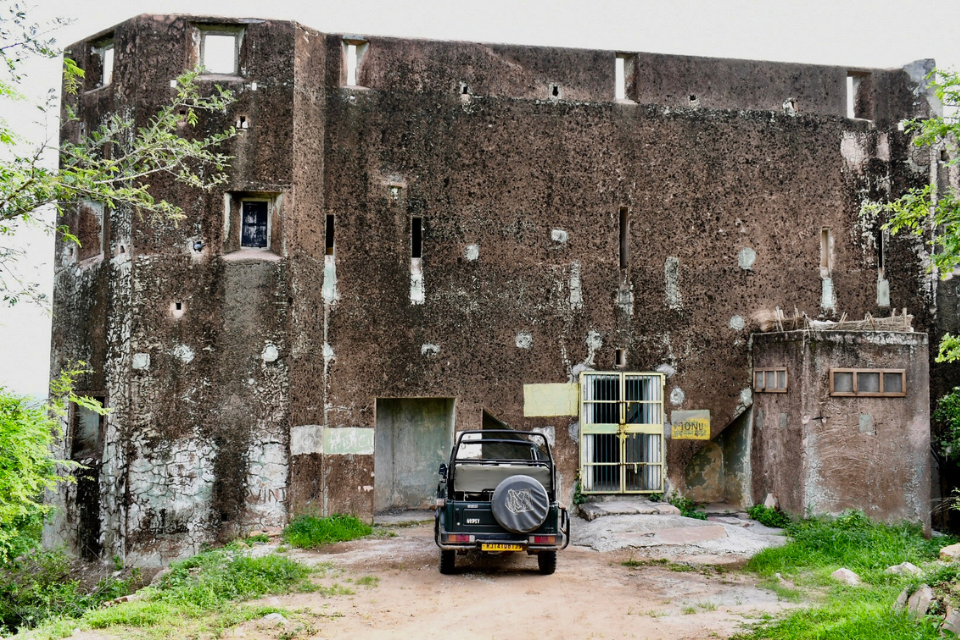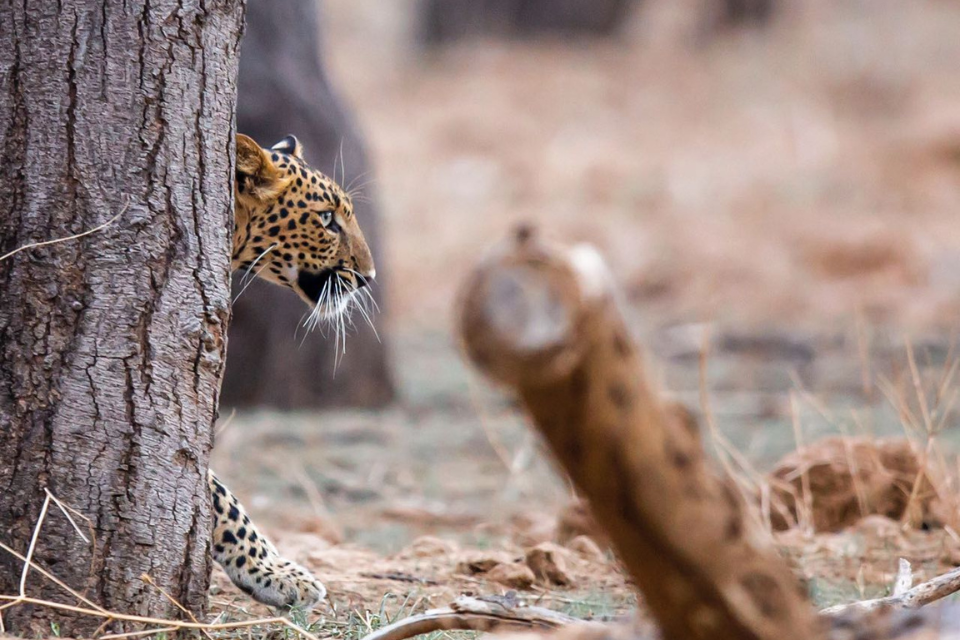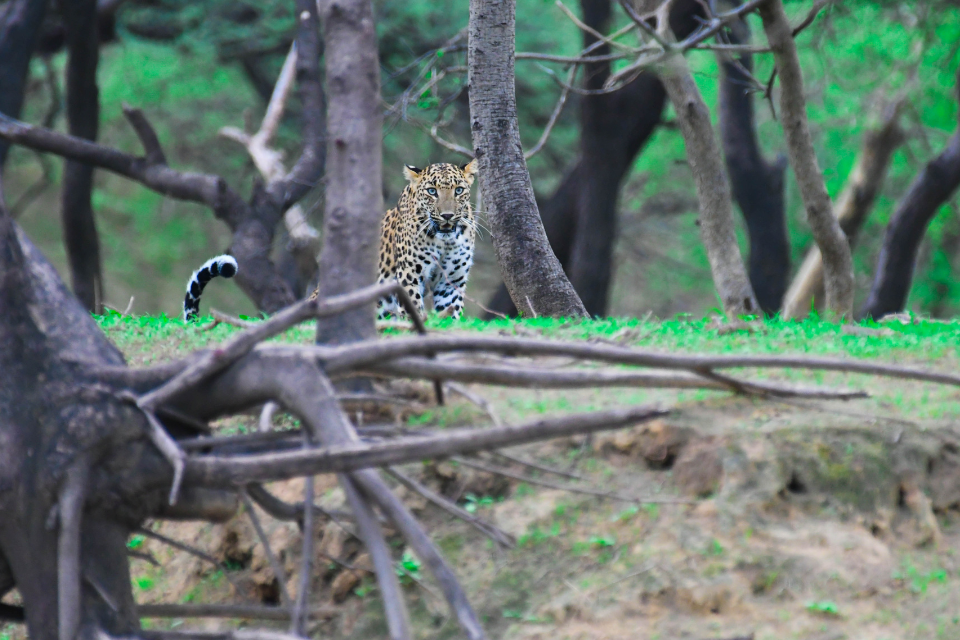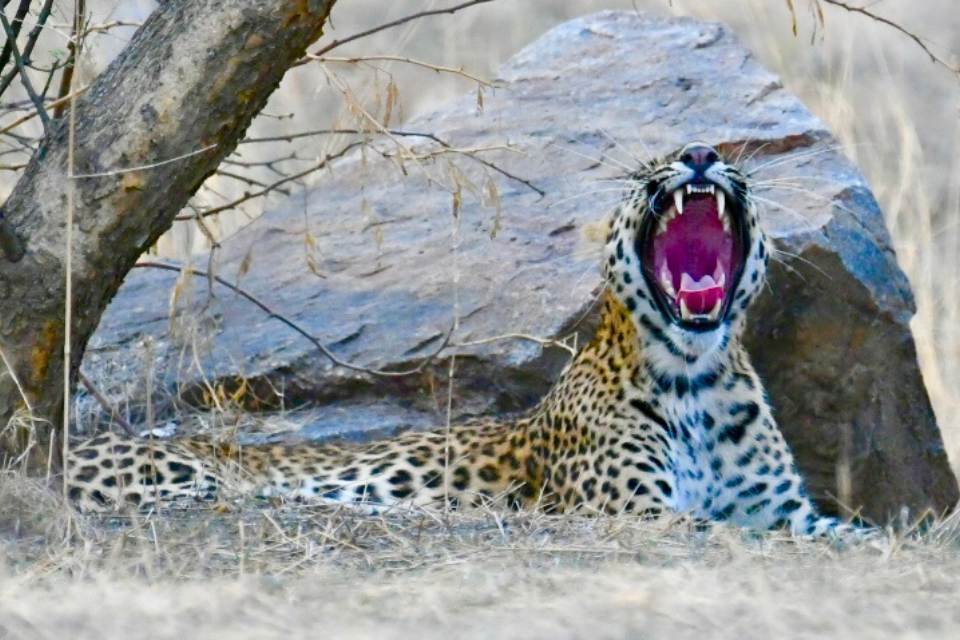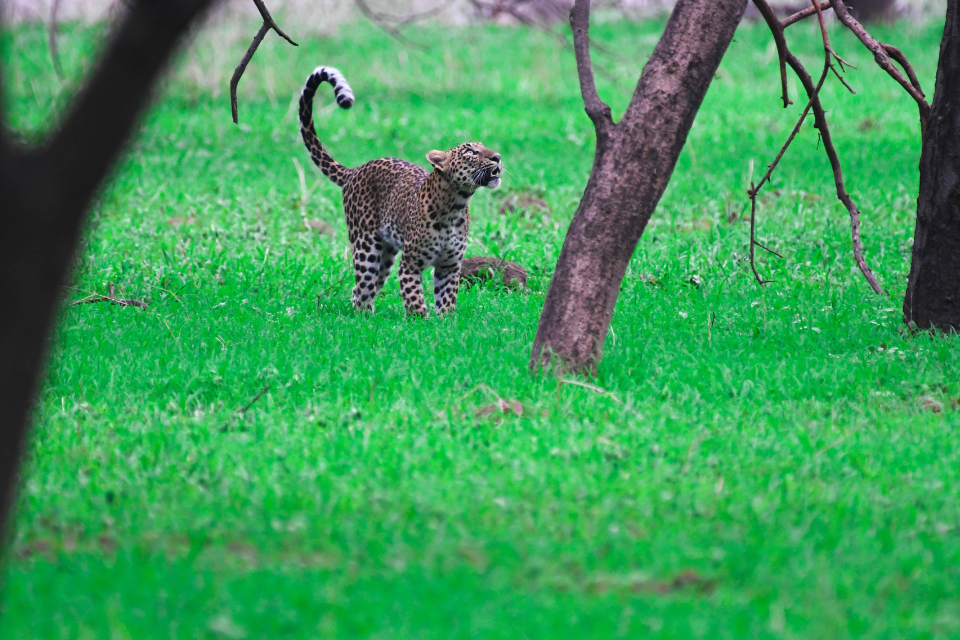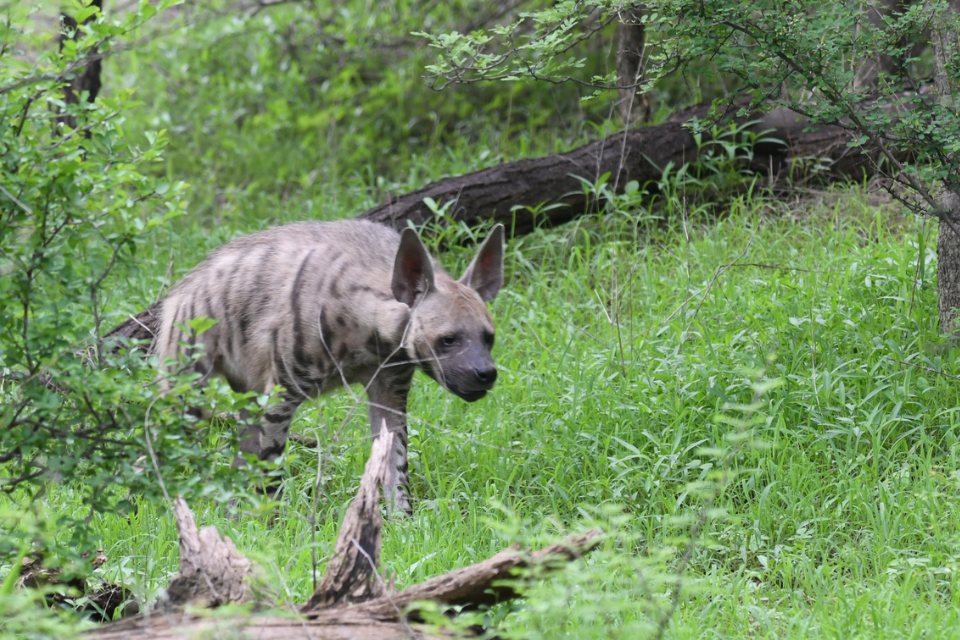- June 26, 2025
How Beed Papad Enhances Jaipur’s Leopard Tourism Infrastructure
Introduction
On the outskirts of Vidhyadhar Nagar, just a short drive from the hustle of Jaipur, a new chapter in urban wildlife tourism has begun—Beed Papad Leopard Safari. Unlike distant national parks, this safari brings the magic of wildlife right to the city’s doorstep. It’s not just about spectacular leopard sightings—it’s a living experiment in sustainable design, conservation, and community-centric urban ecology. Let’s dive into how Beed Papad is reshaping Jaipur’s leopard tourism infrastructure.
1. A Cutting‑Edge Model for Conservation Spaces
- Zoned with Wisdom
Beed Papad doesn’t just throw cages and fences around wild areas—it uses smart zoning. One central core zone allows leopards undisturbed roaming. Surrounding buffer zones gradually soften into public areas. This thoughtful layering minimizes stress on wildlife while ensuring visitors feel immersed, not intrusive.
- Research at the Forefront
On‑site, a small but busy Wildlife Research Centre buzzes with activity. Ecologists monitor leopard behavior, track habitat use, and analyze human‑leopard interactions. If you’re lucky, you might spot a researcher checking motion‑sensor cameras or sharing insights with curious guests.
- Collar-to-Community Link
A subset of leopards are fitted with GPS collars—not for “big brother” oversight, but for conflict prevention. Real‑time data helps notify nearby farmers if leopards approach livestock, enabling precautionary steps rather than reactive measures. It’s a win‑win for people and predators.
2. Sustainable Design: Built With Earth in Mind
- Eco‑Materials, Local Feel
Every structure—from ranger huts to viewing hides—is built with local stone, reclaimed wood, and rammed earth. The color palette mirrors Jaipur’s ochres and tans, helping the safari blend seamlessly into its natural setting.
- Solar & Water‑Harvesting Integration
All energy for ranger posts, lights, and visitor amenities comes from rooftop solar panels. Rainwater is captured on-site during monsoons, stored, and reused for restrooms and native landscaping. That’s low‑impact infrastructure at its best.
- Thoughtful Visitor Paths
Three raised wooden platforms on natural trails let groups quietly glimpse at passing leopards. Paths are made of recycled gravel to reduce runoff and erosion. It’s ethical safari design—maximize viewing, minimize footprint.
3. An Urban Wildlife Model—not a Remote Park
- Close to City Life
At just 15 km from Jaipur’s historic center, Beed Papad can be part of a full Pink City day: morning safari, afternoon fort visit, evening market stroll. That proximity also means roads, emergency services, and other city infrastructure are right there.
- Green Corridors & Safe Passageways
Wildlife corridors link the safari zone to nearby forest patches in Vidhyadhar Nagar and Pachetia Hill. Leopards can come and go without penetrating dense urban zones—easing the typical human‑animal friction in expanding cities.
- Scheduled Activity
Only open during daylight, roughly 6 AM–6 PM, the safari honors leopards’ nocturnal rhythms. After hours, gates close and fences are secured—reducing risks from urban encroachment or nighttime wandering.
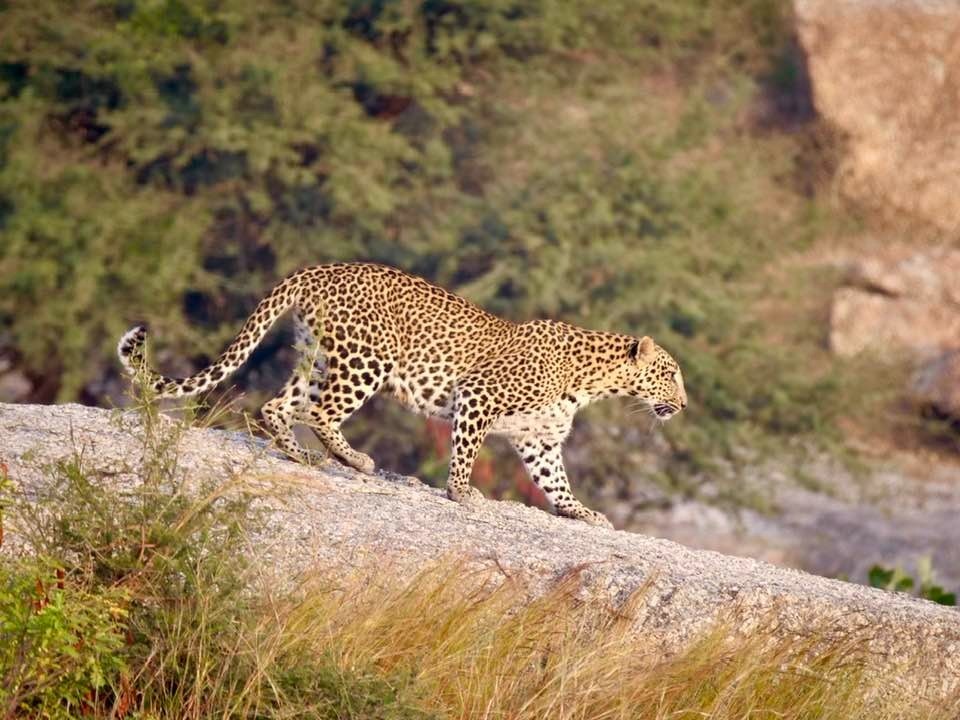
4. Empowering Communities
- Local Employment & Skill Building
You’ll meet guides from Jawai and nearby villages—many of them women—who’ve been trained in wildlife guiding, hospitality, even basic veterinary care. Over 90% of staff are local, boosting both income and pride.
- Village‑Led Enterprises
At the edge of the safari zone, village‑run kiosks offer neem‑flavored papads, leopard‑print scarves, handmade art—and profits help fund schools and water projects. It’s tourism that profits locals, not just outside corporations.
- Vetfelicptive Services
A mobile veterinary van visits around Beed Papad now and then, helping treat domesticated animals injured in wildlife incidents. That builds trust, decreases hostile responses, and nurtures co‑existence.
5. Visitor Experience: Humanized, Respectful, Enriching
- Educational Storytelling
Every visitor receives a multi‑lingual pocket guide with leopard facts, habitat stories, and safety tips. Alongside paths, storyboards echo tribal folklore, local names of animals & plants, and tales of erstwhile leopard‑human friendships.
- Engaging Guides & On‑Trail Chats
Our guides aren’t drones—they’re memorable storytellers. One famed ranger, Ram Singh, fondly recalls: “Once a bolder female walked within twenty meters of my jeep… I sat breathless. It was surreal.” These stories shift wildlife from photos to emotional experiences.
- Low‑Impact Protocol
It’s not a zoo—no plastic bottles, no loud chatter, no bright flashes. Foot baths with disinfectant ensure seeds or pathogens don’t hitchhike in. It’s thoughtful, low‑dose tourism with high respect.
6. Boosting Jaipur’s Leopard Tourism Brand
- A City‑Edge Alternative
Before this, Jaipur’s wildlife tourism meant 150 km drives to Ranthambore or Sariska. Now, a quick drive in the morning can give you leopard magic. That spreads out tourism, reduces pressure on big reserves, and offers more flexible travel options.
- Year‑Round Access
Unlike remote reserves that shut in heavy monsoon, Beed Papad’s greener monsoon backdrop makes sightings even more dramatic pictorially. It’s accessible January through December.
- Integrated Tours & Visibility
Local tour companies now sell “Amber Fort + Leopard Safari” packages. Cultural institutes like Jaipur Virasat collaborate, and media coverage has called this model “a new benchmark in sustainable urban wildlife tourism.”
7. Challenges & Future Directions
- Managing crowd behavior: occasionally it gets chatty. Staff must keep it quiet.
- Long-term funding: continuous monitoring & maintenance require funds beyond park fees.
- Corridor threats: as Jaipur expands, ensuring corridors remain intact is key.
Still, with ongoing community cooperation and mindful planning, these challenges are surmountable.
Conclusion
Beed Papad Leopard Safari is not just an addition to wildlife tourism—it’s a reinvention of how urban spaces can host apex predators. Through sustainable design, researcher‑backed protocols, village empowerment, and immersive visitor experiences, it’s what wildlife tourism should be. Jaipur now doesn’t just sparkle in its forts and palaces—it roars with leopard presence, respectfully and sustainably.
FAQs
- When is the best time to visit Beed Papad Safari?
Early morning and late afternoon—leopards are most active in cooler hours. Monsoons (July–Sept) unveil lush greenery, making sightings magical. - Are kids allowed?
Yes, families are welcome on the vehicle safari and short guided trails—though kids must stay seated and silent during spotting. - Can I combine this with a Jaipur city tour?
Definitely. Located ~15 km from the old city, it’s perfect for a half‑day safari followed by heritage sights or marketplaces. - What are the conservation rules for visitors?
No plastic bottles, no flash photography, stay at least 30 m away—strictly followed to keep leopard welfare central.
How do I ensure I spot a leopard?
Sightings aren’t guaranteed—but 90 min vehicle safaris guided by experts with motion‑sensor intel make chances very high.
Disclaimer All images used in this blog are either sourced from public domain or credited to their respective owners. If you are the copyright holder of any image and wish to request its removal or proper attribution, please contact us at [email protected]
